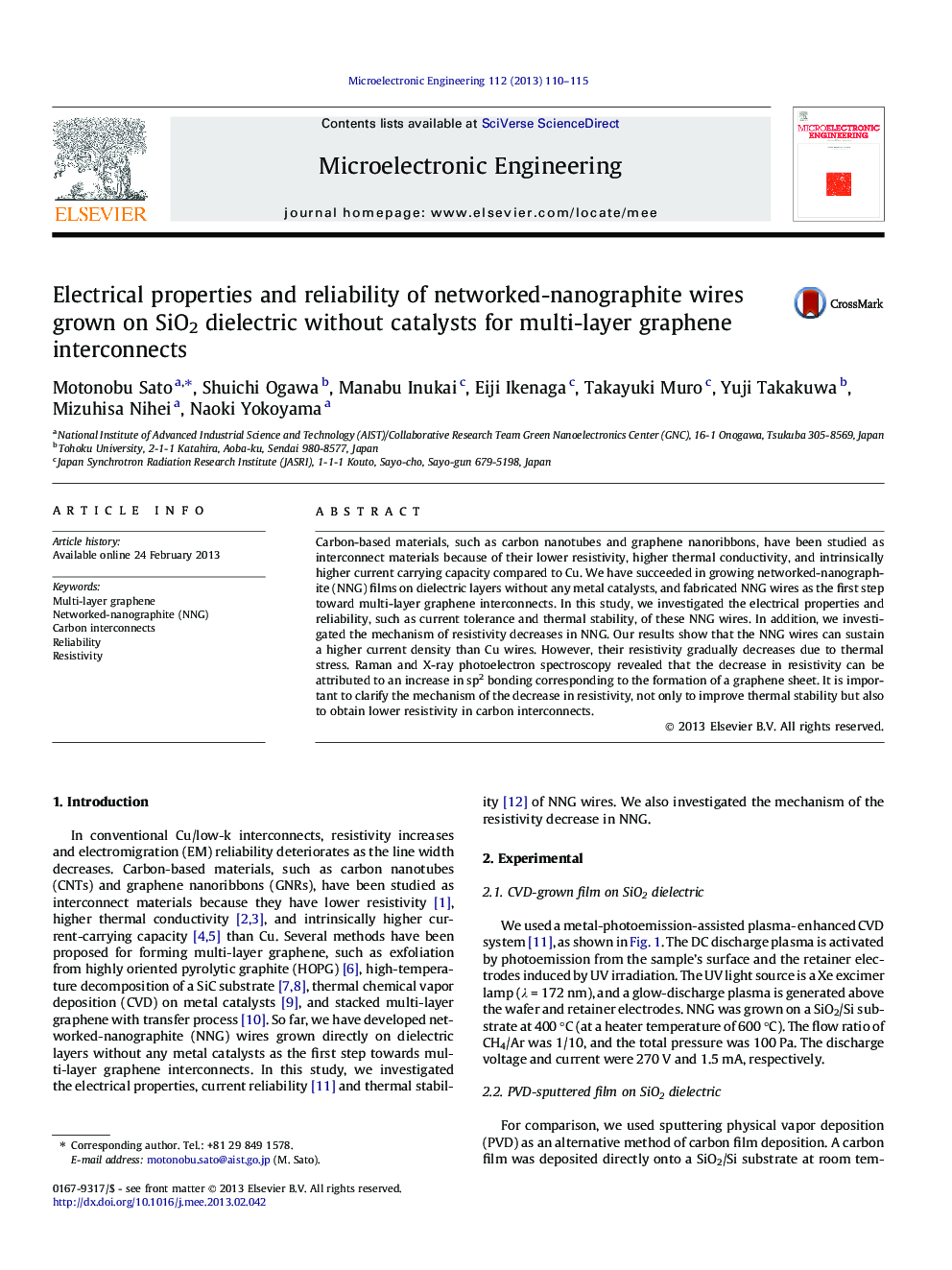| Article ID | Journal | Published Year | Pages | File Type |
|---|---|---|---|---|
| 6943836 | Microelectronic Engineering | 2013 | 6 Pages |
Abstract
Carbon-based materials, such as carbon nanotubes and graphene nanoribbons, have been studied as interconnect materials because of their lower resistivity, higher thermal conductivity, and intrinsically higher current carrying capacity compared to Cu. We have succeeded in growing networked-nanographite (NNG) films on dielectric layers without any metal catalysts, and fabricated NNG wires as the first step toward multi-layer graphene interconnects. In this study, we investigated the electrical properties and reliability, such as current tolerance and thermal stability, of these NNG wires. In addition, we investigated the mechanism of resistivity decreases in NNG. Our results show that the NNG wires can sustain a higher current density than Cu wires. However, their resistivity gradually decreases due to thermal stress. Raman and X-ray photoelectron spectroscopy revealed that the decrease in resistivity can be attributed to an increase in sp2 bonding corresponding to the formation of a graphene sheet. It is important to clarify the mechanism of the decrease in resistivity, not only to improve thermal stability but also to obtain lower resistivity in carbon interconnects.
Related Topics
Physical Sciences and Engineering
Computer Science
Hardware and Architecture
Authors
Motonobu Sato, Shuichi Ogawa, Manabu Inukai, Eiji Ikenaga, Takayuki Muro, Yuji Takakuwa, Mizuhisa Nihei, Naoki Yokoyama,
